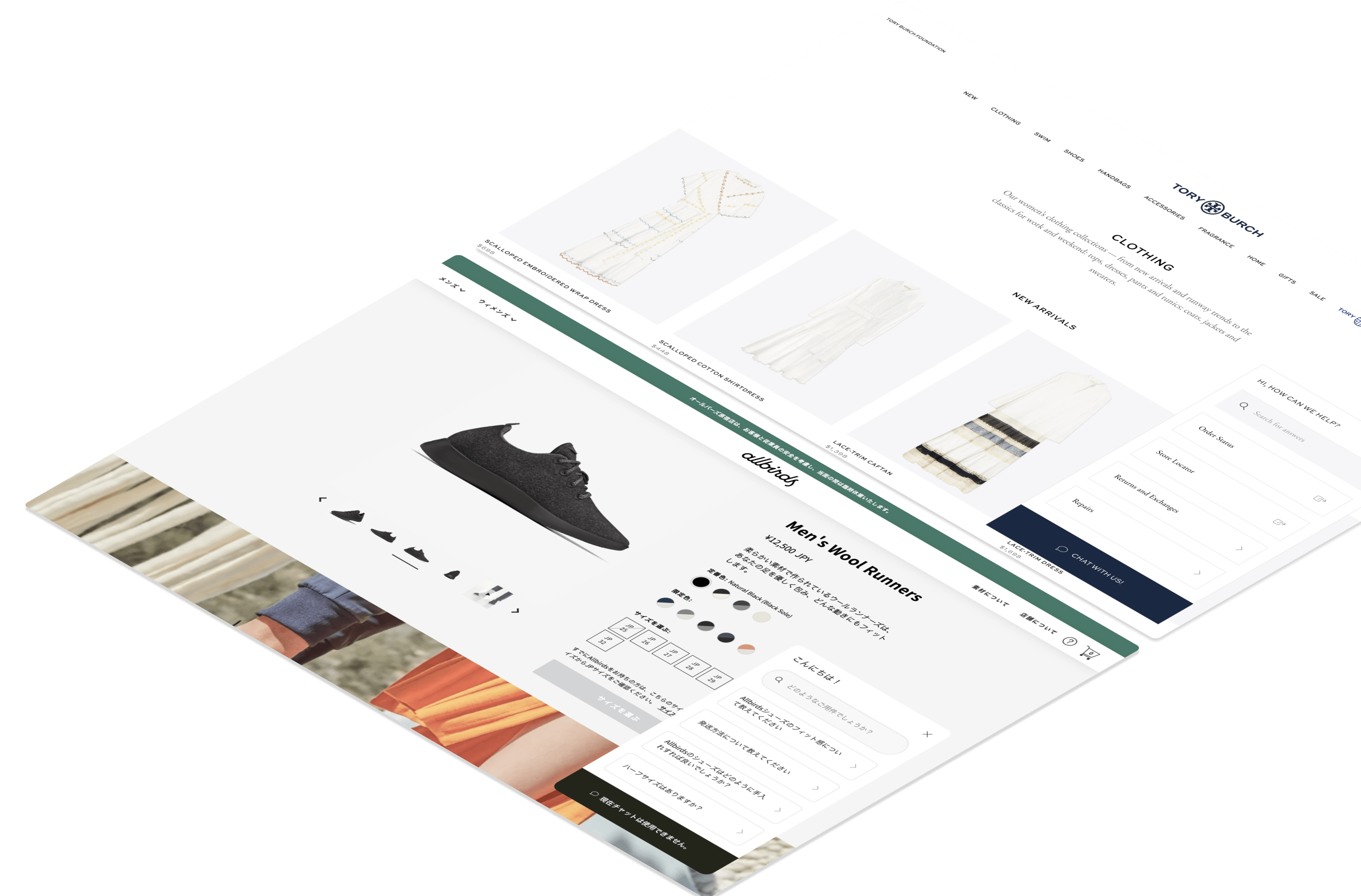
Consumer Experience

Self Service Sidekick
Brands leveraging the Gladly chat product surfaced pain points about the bombardment of basic questions impacting agents from answering more complex customer problems.
We introduced the Sidekick to allow customers to help themselves. I focused on solving the following pain points.
Information at their Fingertips
We learned consumers were lazy to hunt for information because they were scattered through the website. So we brought in a knowledge base search at the forefront and
included the top 4 most asked questions.
Chat Always Visible
Consumers mentioned in other self-service experiences chat was difficult to find — usually tucked behind obscure menu options. We took the opposite approach and offered
chat at every touchpoint in case the consumer required more assistance.
Offer Agents Insights
Other self-service experiences do not transfer information to the agent. This causing the customers to have to repeat their problem to the agent after using self-service.
We wanted to offer more insights by passing on the consumer's interaction to the agent. By the time the customer messages, the agent will have a hint as to what help they might need. (visual by Darrell Chan)


White Label Customizations
Seamless
Our customers consisted of high-end brands in retail, hospitality, and travel. They wanted the Sidekick experience to feel native to their website instead of a 3rd party add-on.
I worked with our brand’s design and website teams to uncover which customizations were most important to them. One crucial factor was not to include a “Power by _company_” mark — anywhere.
Internationalization
Modifying copy was one of the most requested customizations. Our brands often served globally. This required any string to text and the layout to account for foreign languages.
More Control
We offered more customizations than our competitors to best match their brand. We allowed fonts, copy, color, border-radius, iconography as modifiable typically only a few colors are permitted.
It took many conversations across different customers, but I landed a direction that eventually turned into admin screens.

Messaging Payments
Previously consumers could only make necessary payments when speaking to customer service by phone or through guided web directions. If they were on a messaging channel -
they were forced to switch channels in order to complete the transaction. This added a lot of friction to the buying journey. To solve this problem, I designed payments so across
any messaging channel, the consumer would be able to make a payment directly without having to leave their preferred channel. This also helped save jobs as call center agents are now revenue generating.
End-to-End
I lead the design of the feature from the agent’s perspective as they initate the payment request, and the complete journey when the consumer receives the request and
is able to enter their credit card information.
